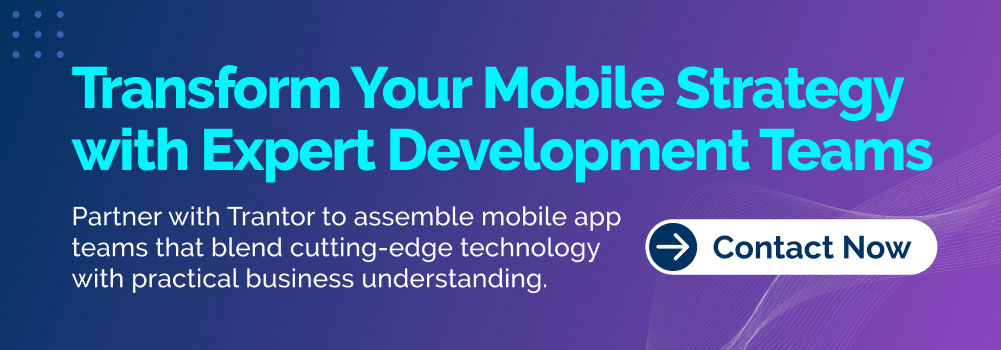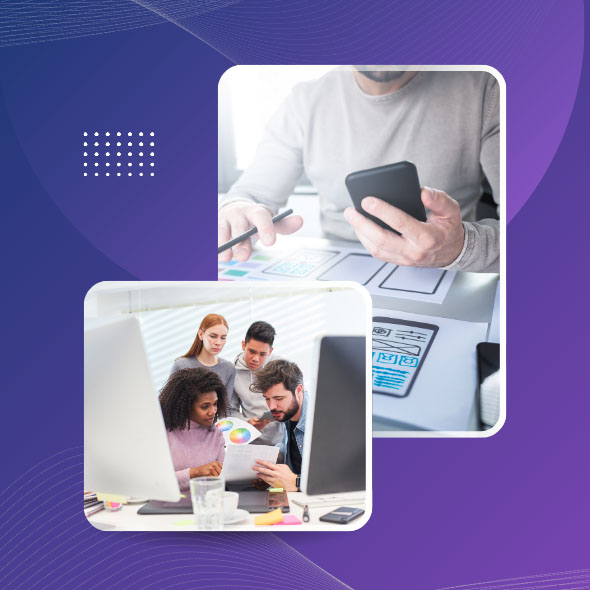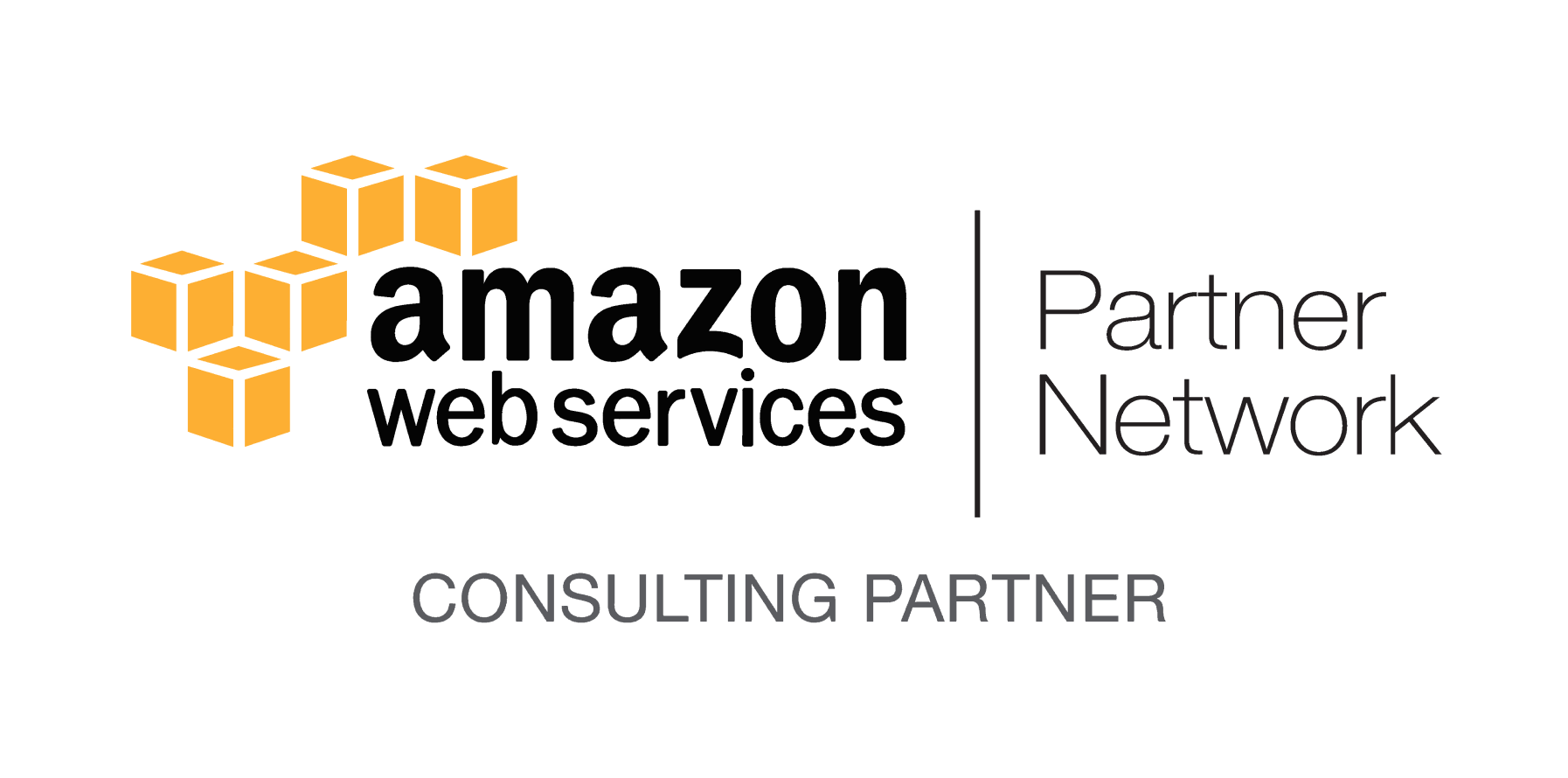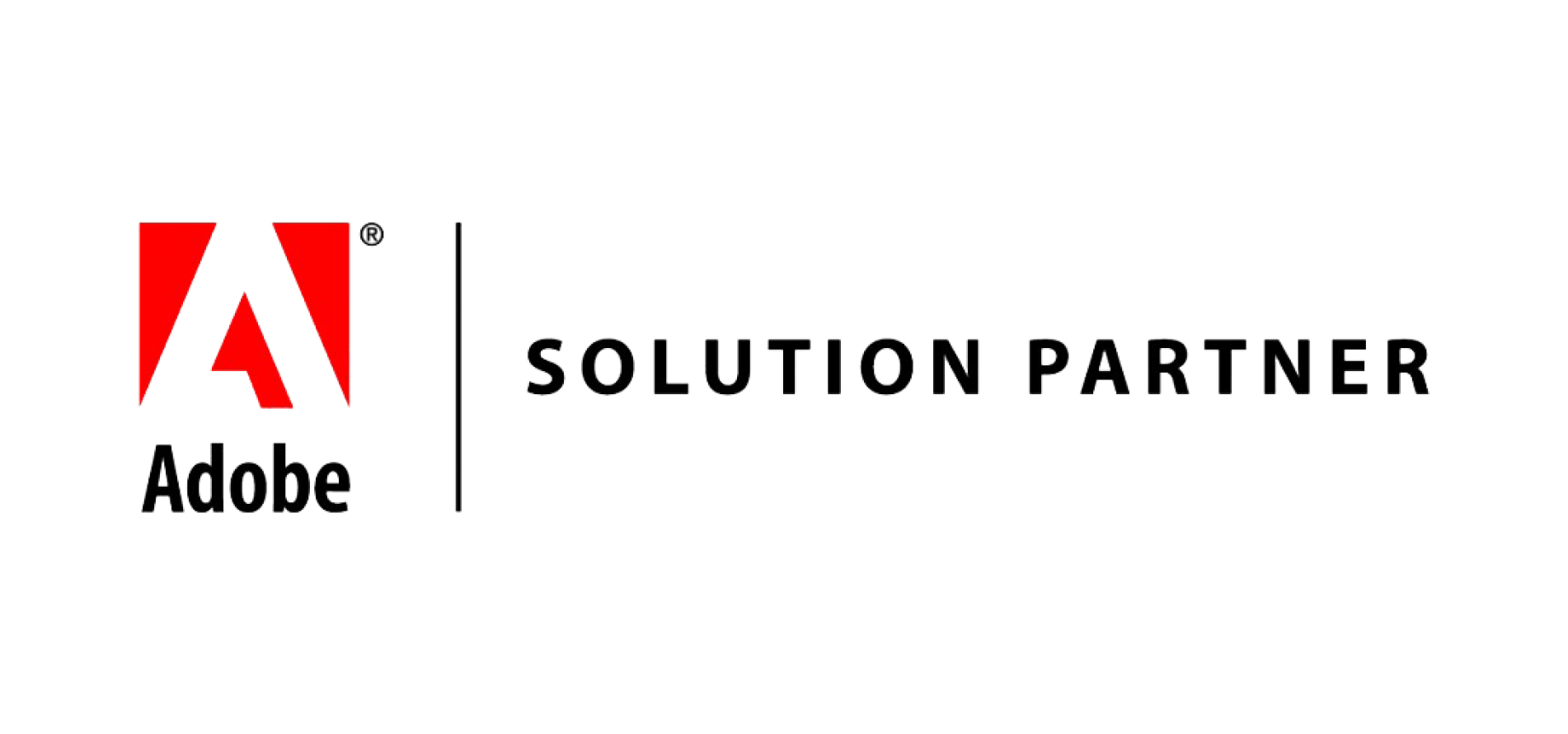Artificial Intelligence, zBlog
Hire Mobile App Developers: Step-by-Step Hiring Checklist
trantorindia | Updated: October 8, 2025
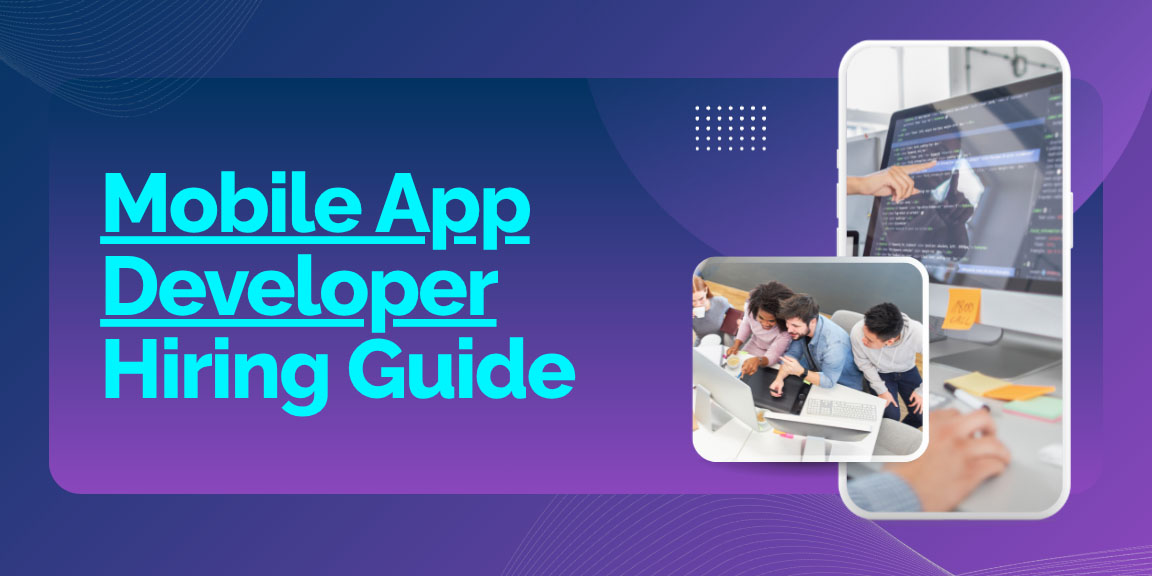
In 2026, the competition for top mobile development talent is fiercer than ever. Mobile apps continue to be critical touchpoints for customers, internal operations, and digital transformation, and the quality of your mobile app development team can make or break your success. If you aim to hire mobile app developers—whether in-house, remote, or via outsourcing—you need a structured, well-informed approach.
This blog is your definitive hiring guide: a step-by-step checklist, with practical advice, real-world insights, and up-to-date trends. By the end, you’ll have clarity on how to attract, evaluate, hire, onboard, and retain excellent mobile developers in 2026. And if you want assistance, Trantor is ready as your strategic partner.
Why It Matters in 2026: Market Trends & Demand
Before diving into the hiring steps, let’s ground ourselves in the current landscape—so you know what you’re competing with.
Strong Growth in Developer Demand
- The U.S. Bureau of Labor Statistics projects that employment for software developers, quality assurance analysts, and testers will grow about 17% from 2023 to 2033, much faster than average.
- In current job market reports, tech roles—especially in AI, mobile, and application development—remain among the few showing resilience.
- According to Robert Half, mobile application developer jobs continue to show consistent demand.
Evolving Mobile Tech Landscape
2026 is a pivotal year for mobile development, due to:
- AI-powered experiences: Apps increasingly embed AI layers rather than treat AI as an add-on.
- Cross-platform dominance: Tools like Flutter, React Native, Kotlin Multiplatform are becoming standard choices to reduce time-to-market and maintenance overhead.
- 5G, edge computing & AR/VR: These push capabilities like real-time features, rich media, and immersive experiences.
- Security & privacy by design: With regulations tightening, app developers must integrate robust security, data encryption, and privacy from day one.
Given these pressures, you need mobile app developers who are not just coders but innovators, adaptable, and security-conscious. That further raises the bar in your hiring process.
Pre-Hiring Phase: Preparation & Strategy

Before you post a job or start interviewing, laying proper groundwork is essential. Here’s what you should do first:
Clarify Your Project Needs & Scope
- Define the app type: native (iOS, Android), cross-platform, or hybrid.
- Decide features & complexity: simple/utility app, e-commerce, real-time, AR/VR, AI components, offline capabilities, etc.
- Estimate timeline & deliverables: MVP, subsequent versions, maintenance.
- Determine budget & constraints: what’s your budget per month or for the entire project.
Having clarity helps you match candidate skills to your project’s technical demands.
Choose Hiring Model: In-house, Outsource, or Freelance
Each model has pros and cons:
- In-house hiring: best for long-term control, deep collaboration, alignment, IP ownership—but higher overhead (recruitment, benefits, infrastructure).
- Outsourcing / Development agency: quicker ramp-up, experienced teams, less management overhead. Risk: lower control, communication barriers, quality consistency.
- Freelancers / contractors: cost-effective for short engagements or niche tasks, but risk of availability, accountability, and handover challenges.
Often, organizations combine models: core in-house + outsourced modules + freelancers for niche work.
Decide Geographical / Remote Scope & Time Zone Considerations
In 2026, remote and distributed teams are the norm. But you need to consider:
- Overlapping work hours for real-time collaboration
- Language, culture, communication skills
- Legal, tax, and payroll compliance in remote jurisdictions
- Data security of cross-border work
Set Skill & Experience Requirements
Define what your ideal mobile app developer must know, from core to bonus:
- Core skills: Swift, Kotlin, Java, Flutter, React Native, Dart, UX/UI integration, RESTful APIs, local storage, concurrency, performance optimization.
- Bonus / advanced skills: AI/ML integration, AR/VR, security, push notifications, offline-first design, blockchain, edge computing.
- Soft skills: problem solving, communication, teamwork, adaptability, ownership.
- Senior expectations: architecture design, mentoring, code review, DevOps / CI-CD pipeline, testing strategies.
Salary, Compensation & Benefits Benchmarking
Research current market rates. As of recent reports:
- Mobile apps development roles are in demand; companies must offer competitive pay, especially for senior or AI-integrated skills.
- Consider benefits like remote work flexibility, stock options, training reimbursements, healthcare, and autonomy as differentiators.
Benchmark in your target geographies. For example, rates vary significantly between U.S., India, Southeast Asia, and Eastern Europe.
Create a Detailed Job Description
Ensure your job posting is specific, clear, and attractive:
- Title: “Senior iOS/Android / Cross-platform Mobile App Developer”
- Summary: Project overview, company mission
- Responsibilities: what the candidate will do
- Qualifications: must-haves (core skills), nice-to-haves (bonus skills)
- Tools & tech stack: specify frameworks, tools, APIs
- Work model: remote / hybrid / in-office
- Compensation range (if possible)
- Growth opportunities, team structure, culture
- How to apply: sample code links, portfolio, references
Precise job descriptions filter weak applicants and attract quality candidates.
Sourcing: Finding Candidates

Once you’re ready, it’s time to hunt for mobile app developer talent. Here are effective channels and strategies:
Use Multiple Channels
- Job boards & platforms: LinkedIn, Indeed, AngelList, Stack Overflow Jobs
- Freelance marketplaces: Upwork, Toptal, Freelancer, Gun.io
- Specialist mobile or dev communities: GitHub, Flutter / React Native forums, iOS/Android meetup groups
- Referrals: Ask your team, network, clients for recommendations
- Outsourcing agencies / development houses: vetted and experienced teams
Combining channels maximizes reach and diversity of profiles.
Use Skills-First & Project-Based Assessments
Many firms now adopt skills-based hiring over strict degree requirements—especially for app development. This allows assessing actual ability rather than relying solely on resumes.
You can issue mini tasks or take-home assignments to test real-world coding capability.
Pre-Screen with Short Assessments
- Short coding tests (e.g. algorithm challenge, bug fix)
- Basic technical phone/Zoom screening (experience, architecture, past projects)
- Portfolio / GitHub review
This filters out weak matches before full interviews.
Attract Passive Candidates
Top talent may not be actively job-hunting. Reach out with:
- Personalized messages referencing their work
- Highlight unique opportunities you offer (interesting projects, growth, culture)
- Offer code challenges or small freelance tests as a foot-in-the-door
Interview & Evaluation Stage

This is where your hiring rigour pays off. A structured interview process helps eliminate bias and ensures consistent evaluation.
Interview Structure
You can structure interviews in multiple rounds:
- Technical screening / phone call
- Coding challenge / take-home test
- Live coding / pair programming
- System design / architecture interview
- Behavioral / culture fit interview
- References & past projects review
- Final decision / offer conversation
What to Test / Evaluate
Technical & Coding Skills
- Language proficiency (Swift, Kotlin, Dart, etc.)
- Framework knowledge (Flutter, React Native, native iOS/Android)
- Knowledge of mobile lifecycles, memory management, concurrency
- API integration, offline storage, sync, background tasks
- Testing (unit, UI, integration)
- Performance optimization, profiling, memory leaks
- DevOps / CI-CD pipeline familiarity
- Security best practices (data encryption, authentication, secure API)
- Version control (Git flows)
Architecture / System Design
- App modularization, clean architecture (e.g. MVVM, VIPER)
- Scalability, maintainability, component reuse
- API versioning, caching strategies, syncing
- Offline-first, conflict resolution strategies
- Handling push notifications, background tasks
- Handling faults, error states, recovery
Soft Skills / Culture Fit
- Communication skills (explaining decisions, trade-offs)
- Collaboration, mentorship experience
- Ownership mindset and accountability
- Creativity and problem-solving
- Adaptability to new technologies
Past Project & Portfolio Review
Ask candidates to walk through:
- Past mobile apps (published or internal)
- Their specific contributions, challenges, trade-offs
- What they would do differently now
- Code samples (cleanliness, maintainability)
References & Soft Validation
Contact past managers, peers, or clients:
- Delivery track record, adherence to timelines
- Team collaboration, feedback, problem areas
- Growth over time, ability to handle responsibility
Avoid Bias & Standardize Scoring
Use a scorecard system with key criteria and consistent scales (e.g. 1–5) across candidates. Make sure multiple interviewers weigh in. This reduces subjectivity and promotes fairness.
Offer & Onboarding

After selecting the ideal candidate(s), a smooth offer and onboarding process distinguish a strong hiring experience.
Crafting the Offer
- Be timely: delay reduces acceptance odds
- Be transparent: clearly state salary, benefits, equity, perks
- Include bonuses, stock, training budgets, work flexibility
- Provide clear paths for growth
Onboarding & Integration
First days and weeks are critical for retention and productivity:
- Provide a clear onboarding plan (tools, access, documentation)
- Assign a mentor or buddy from the team
- Give a small starter task to gradually accustom to codebase
- Introduce team rituals, standups, communication norms
- Encourage early feedback and check-ins
- Offer training resources and time for learning
A poor onboarding can derail even a great hire.
Retention & Growth: Keeping Great Developers
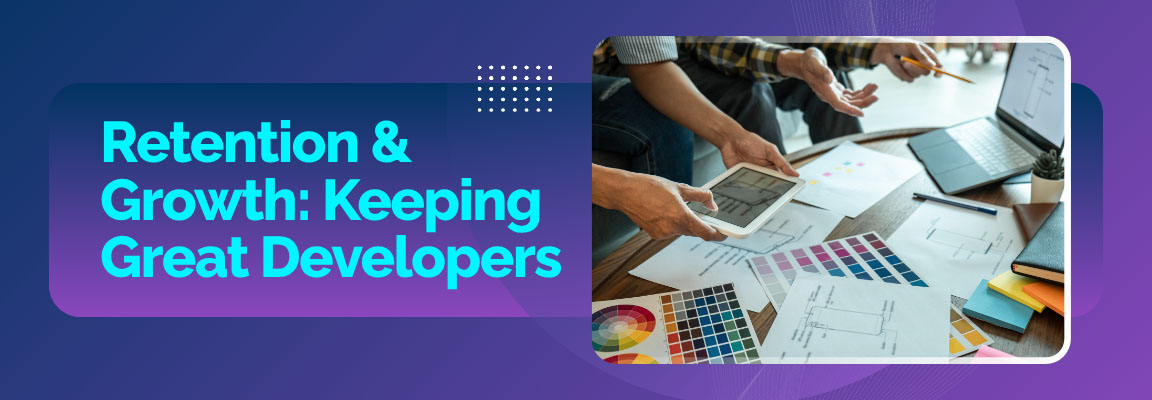
Hiring mobile app developers is just the start—retention is often harder. Here’s how to build long-term engagement:
Continuous Learning & Exposure
- Allocate time for new tech explorations (e.g. AR/VR, AI, cross-platform tools)
- Provide access to conferences, courses, certifications
- Encourage internal hackathons or innovation sprints
Career Paths & Mentorship
- Define growth ladders (Junior → Mid → Senior → Architect)
- Formal mentorship, knowledge sharing sessions, code reviews
- Leadership opportunities like owning modules, mentoring juniors
Recognition & Ownership
- Let developers own features or modules
- Recognize contributions in public forums or all-hands
- Reward suggestions, optimizations, process improvements
Healthy Work Culture & Balance
- Avoid burnout; manage realistic deadlines
- Focus on outcomes, not micromanagement
- Promote psychological safety for experimentation and mistakes
- Flexible hours, remote options, wellness programs
Regular Feedback & Performance Review
- Quarterly or biannual reviews with clear goals
- 360° feedback (peers, product, QA)
- Open discussions on career goals, challenges
By investing in retention, you reduce repeated hiring costs and maintain continuity.
Step-by-Step Hiring Checklist for 2026 (Summary)
Here’s a consolidated checklist you can follow when you hire mobile app developers:
Use that as your central roadmap and adapt it to your organization and project.
Real-World Examples & Case Studies
To bring these ideas to life, here are a few illustrative scenarios and lessons:
Case Study: Fintech App Startup in North America
A U.S.-based fintech startup needed to hire 3 mobile app developers (iOS + Android) to build a new payments app. They:
- Defined MVP scope with basic functionality, security, and analytics
- Chose a hybrid approach: one senior in-house lead + two outsourced developers
- Posted on niche mobile job portals and offered code challenge screening
- Used a scorecard and consistent scoring across interviews
- Turned around hiring within 4 weeks
- Retained the team by offering equity, remote flexibility, and quarterly innovation “blue sky” time
Key outcome: They shipped the MVP in 6 months and pivoted quickly based on user feedback.
Example: Large Enterprise Transitioning Legacy App
A legacy enterprise had a monolithic iOS app needing modernization with cross-platform support and AI features. They:
- Hired a senior mobile architect first
- Built a “bridge team” of existing and new developers
- Required candidates to show experience in migrating legacy mobile systems
- Emphasized soft skills and mentorship in hires
- Prioritized retention through internal training and upskilling
Result: They successfully migrated to a Flutter-based app over 12 months with minimal user disruption.
These examples illustrate the importance of clarity, structure, and combining experience with newcomers.
Common Mistakes & How to Avoid Them

Even experienced organizations stumble. Here are pitfalls you should watch out for:
- Vague job descriptions → attract unqualified candidates
- Overemphasizing trendy frameworks over fundamentals → experience in basics matters more than chasing buzzwords
- Skipping architecture interviews → leads to unscalable solutions
- Lengthy hiring processes → lose top candidates; a study showed startups reduced “time to hire” from 30 to 18 days.
- Poor onboarding → early confusion, poor productivity, attrition
- Lack of growth path → developers leave when they have no advancement
- Ignoring culture & communication → even top coders falter if team cohesion is weak
- Underestimating remote management overhead → asynchronous practices, communication tools, and documentation must be strong
Avoiding these improves your odds significantly.
Frequently Asked Questions (FAQs)
Q. How much does it cost to hire mobile app developers in 2026?
That depends on region, experience, and project scope. Senior mobile developers in the U.S. may command six-figure salaries. In emerging markets or outsourcing regions, rates vary widely. Always benchmark locally and include total compensation (benefits, equity, etc.).
Q. Should I hire native or cross-platform mobile developers?
It depends on your priorities. Native (Swift, Kotlin) typically offers better performance and platform-specific features. Cross-platform (Flutter, React Native) can accelerate delivery and reduce maintenance cost. Many projects begin native and evolve into hybrid or cross-platform.
Q. Is it risky to hire remote mobile developers?
Remote work brings challenges (communication, compliance, time zones), but with proper processes, tooling, and trust, it’s very viable—especially in 2026’s remote-first world.
Q. How quickly can I expect to see productivity from a new hire?
It depends on onboarding, complexity, and tool familiarity. Typically, expect real contributions by weeks 3–6, and full productivity by month 3.
Q. Can I outsource mobile development entirely?
Yes, many companies do. But you should retain oversight, architectural leadership, and clear delivery milestones to mitigate risks.
Q. What qualities make a “top” mobile developer?
Beyond technical skills: ownership, architectural thinking, adaptability, clear communication, mentoring ability, and domain understanding.
How Trantor Can Help You Hire & Build High-Performing Mobile App Teams
Hiring mobile app developers in 2026 isn’t just about filling a technical role — it’s about strategically investing in the long-term success and scalability of your digital ecosystem. The right developers don’t just write code; they help you shape how your customers experience your brand, how your teams collaborate, and how your business competes in an increasingly mobile-first world.
As the app economy matures, mobile development now sits at the intersection of AI-driven automation, cloud-native infrastructure, and human-centered design. This means that hiring decisions should extend beyond technical skills — they should include alignment with your business goals, adaptability to emerging technologies, and a shared commitment to innovation and user experience.
If you’re looking to hire mobile app developers for a new product, enterprise platform, or modernization initiative, start by focusing on clarity: what problems are you solving, which platforms matter most, and how can your development team evolve with your roadmap? Building a mobile app is not a one-time project — it’s an ongoing journey that demands creativity, agility, and resilience.
The step-by-step hiring checklist in this guide ensures you approach recruitment with structure and confidence. From defining roles and setting budgets to vetting candidates, conducting interviews, and retaining top talent, each stage contributes to assembling a high-performing mobile app development team that drives measurable results.
However, for many organizations, the biggest advantage comes from partnering with a team that already has proven expertise across iOS, Android, cross-platform, and enterprise mobility solutions. That’s where Trantor comes in.
At Trantor Inc., we go beyond traditional outsourcing. We work as an extension of your in-house team, providing custom mobile app development services that blend cutting-edge technology with practical business understanding. Whether you’re launching a consumer app, developing an internal enterprise solution, or scaling a digital ecosystem, our engineers, designers, and strategists deliver outcomes that are future-ready and ROI-driven.
We bring deep experience in native and cross-platform development, cloud integration, AI-based mobile apps, UI/UX optimization, and post-launch maintenance, ensuring your product remains competitive and compliant with 2026’s rapidly evolving standards.
If you’re ready to hire mobile app developers who align with your brand’s vision and technical goals, let’s start a conversation. Together, we’ll design, develop, and deploy apps that empower your users, strengthen your market position, and accelerate your digital growth journey.
👉 Partner with Trantor Inc. for full-cycle mobile app development and team augmentation: Custom Mobile App Development Services or visit our homepage to explore how Trantor helps global enterprises build intelligent, scalable, and secure digital products
